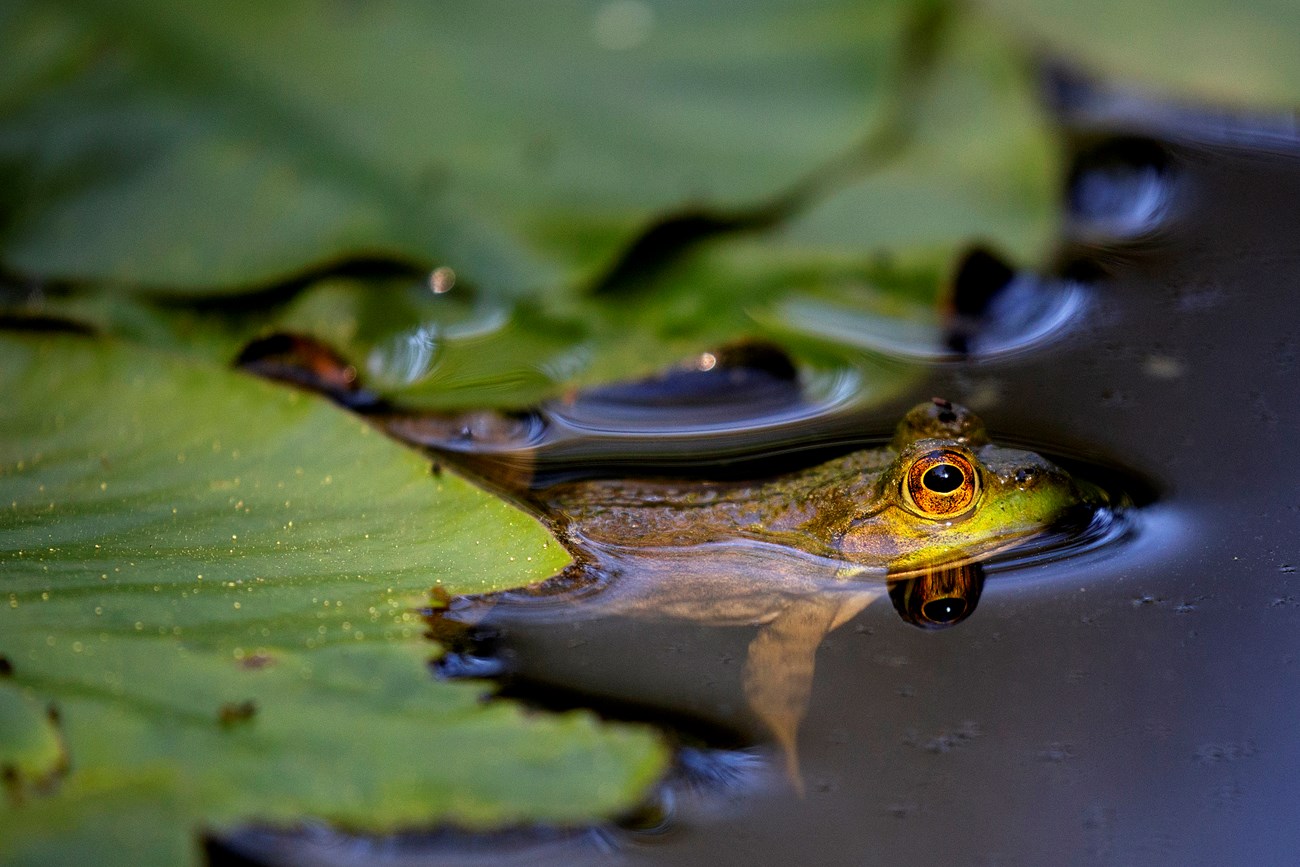Last updated: August 24, 2021
Article
American Bullfrogs Fast Facts

FOA/ADMT
- Amphibians: Bullfrogs are amphibians. All amphibians are ectotherms (cold-blooded), have soft, usually moist skin, lay eggs without shells, and have a two-stage life cycle (a gilled larval form and an adult form).
- Diet and Predators: Bullfrogs are carnivores. They eat crayfish, water beetles, snails, dragonfly nymphs (larvae), small fish, and occasionally small birds. Animals such as snapping turtles, foxes, herons, and raccoons eat Bullfrogs.
- Coloration: Bullfrogs are green and brown; this allows them to camouflage with plants growing in ponds. This is how they hide from predators.
- Gender and Size: This Bullfrog is male. You can tell because his throat is yellow. Female bullfrogs have white throats. Bullfrogs are the largest species of frog in the U.S. They can grow up to 8 inches and weigh over 1 lb.
- Life Cycle: Eggs are laid as a jelly-like mass floating on the surface of the water. Around 12,000-20,000 eggs can be laid in each mass. They usually spend 2 winters as tadpoles and live around 8 years.
- Eyes: Frogs have large, bulging eyes that sit at the top of their skulls. The location of their eyes gives frogs a wide frame of vision, which is important because they cannot move their heads from side to side.
- Croaking: Only male Bullfrogs croak. It sounds like “jug-o-rum!” They croak to attract mates and establish territory. You can hear them singing in spring and summer during mating season. Frogs croak by breathing in, closing their nostrils, and then forcing air backwards and forwards between their lungs and vocal sac.
- Breathing: Frogs do not have ribs or a diaphragm to help with breathing like humans do. Instead, they rely on their throats to push air in and out of their lungs. This is why you see the frog’s throat moving quickly in the video. Frogs can also absorb oxygen through their skin directly into their blood vessels. In order for this to work, a frog’s skin must be wet, which is why amphibians secrete mucous.
- Location: This is Lakewood. It’s around 14 acres and up to around 11 feet deep. It’s in Acadia National Park. Swimming is popular here. Though it’s considered a “Great Pond” by the state of Maine because it’s larger than 10 acres, it’s commonly called a lake. There is no technical difference between a pond and lake, but there are some rules of thumb. If sunlight can reach the bottom of an entire body of water, then it could be considered a pond. If some sections are too deep for sunlight to reach the bottom, then it could be considered a lake. Ponds generally have smaller surface areas, while lakes could have larger surface areas. There’s not one exact definition.
